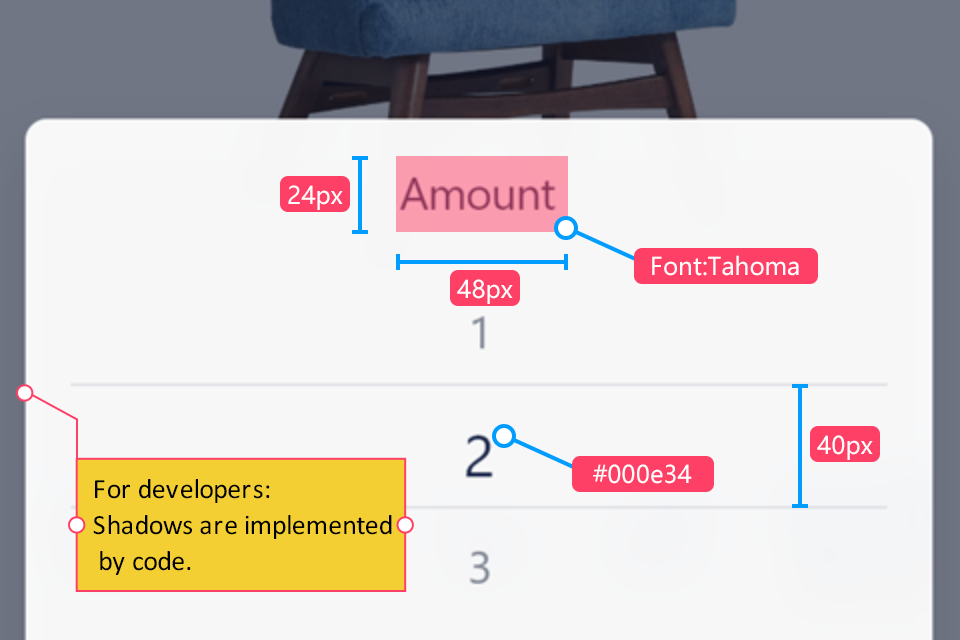

Brass knobs and handles are added to cabinets, drawers and armoires for an added touch of sophistication. Woods typically used to construct furniture include maple, elm, hickory and cherry.

Each table and chair goes through a custom-made process in which intricate carvings and design elements like flourishes are imprinted. Furniture is handmade and inspired by the early American frontier. Fabrics and wallpaper feature a toile design, which was popular during the colonial era. The aesthetic draws on styles and trends from the 1600s to the 1800s, and often contains subdued muted colors, and vintage finishes like oil-rubbed bronze. This early American style combines characteristics from traditional and rustic home design, while incorporating historically inspired elements.

Accents include handwoven baskets, bolga fans, carved wooden bowls and ritual masks, stone artifacts and soft-shaped poufs. butterfly chairs) with decorative mudcloth slings are signature pieces of seating in this aesthetic. Animal hides like zebra or cheetah are often used to highlight the importance of wildlife in African culture. Chair seats and backs may also be made from braided grasses. Much of African furniture is made from ebony, mahogany or cedar woods, or rattan with patterned ikat fabric, kuba cloth or leather upholstery. Floors are often sandstone, terracotta or stained concrete with sisal or jute rugs.
#Home the art of effortless design full#
The palette is typically full of rich warm colors like burgundy, burnt orange and deep brown earth tones with textured soft beige, cream or white painted walls.

This exotic style celebrates the imperfections of hardwoods, reeds and stone in its minimalist handmade furnishings. AfricanĪfrican interior design is inspired by nature and utilizes natural shapes, textures and finishes. You might see a geometric diamond-shaped pendant that casts abstract lighting throughout the interior. Lighting also features simple lines and borrows from a modern aesthetic. Tables, chairs and sofas have clean lines, but much like the entirety of the abstract style, these furniture pieces are asymmetrical. Black is used as a contrasting element to create a striking statement. This type of interior design lends itself to bold colors, such as yellows, blues and oranges. It’s similar to modern or contemporary design in that it utilizes clean lines, though abstract style also incorporates chaotic aspects to offer a fresh and unique perspective. Much like expressionist abstract art, abstract home design focuses on unique architectural elements, such as asymmetrical doorways and home furnishings. This resource, like style itself, is always evolving.
#Home the art of effortless design free#
Feel free to use this list of common design styles as a starting point for your decorating project, and let us know how we can improve it. Each style is explained through a topline description, identification of specific features, examples of signature furniture and lighting pieces, and a photo depicting certain aspects of the home decor style. The guide will continue to grow over time and we welcome suggestions. We started with 100 of the most popular interior design styles and we’ve recently added five more to the list. What are the most popular interior design styles? This glossary was created for a number of reasons: Inform – Serve as a comprehensive repository of style definitions Inspire – Help clients visualize how various rooms and styles can be blended to create a personalized decor theme Empower – Make it easier for designers and clients to effectively communicate ideas. Purpose of this home decorating styles glossary If a client cannot clearly articulate his or her vision for decorating a residential or commercial space, it presents a great challenge for an interior designer. Consequently, perceptions of design style can be confusing without a common frame of reference. Interior design is defined as, “the art or process of designing the interior decoration of a room or building.” While a “process” may include a set of rules or stringent guidelines, the concept of “art” is much more fluid and subjective. Last updated Wednesday, MaWhat is interior design?


 0 kommentar(er)
0 kommentar(er)
